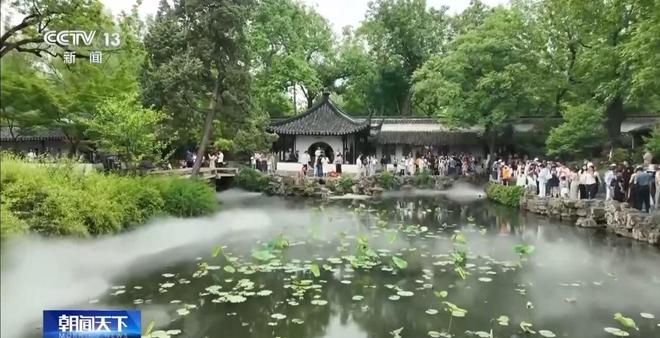Cultural China Tour丨Suzhou Gardens: A World Within Reach Encountering a Thousand-Year-Old Cultural Context

Suzhou Gardens, a world cultural heritage, are typical representatives of Chinese classical gardens. The ingenious layout of “the universe within a few feet” condenses landscape poetry and painting into a small space – telling the Chinese people’s unremitting pursuit of a better life for thousands of years; demonstrating the wisdom and creation of harmonious coexistence between man and nature.
“Gardens in Jiangnan are the best in the world, and Suzhou gardens are the best in Jiangnan.” Suzhou gardens, which began in the Spring and Autumn Period and flourished in the Ming and Qing Dynasties, have been the concentrated embodiment of poetic Jiangnan since ancient times. After thousands of years of wind and rain, there are more than 80 well-preserved classical gardens in Suzhou City, of which 9, including Humble Administrator’s Garden, Lingering Garden, and Master of the Nets Garden, have been listed in the World Cultural Heritage List by UNESCO.
Xue Zhijian, Director of Suzhou Garden Museum: Suzhou is a gathering of famous gardens, which is inseparable from its profound historical and cultural accumulation and the environment of Jiangnan water towns. After the Song Dynasty, China’s economic center of gravity moved south, and Suzhou became an economic center in Jiangnan. The gathering of literati and scholars promoted the development of garden aesthetics. The prosperity of Suzhou gardens is actually the result of the combined effect of multiple factors such as the prosperous economy and culture at that time.
Cut a corner of the 30,000 hectares of Taihu Lake, cut a piece of the 72 peaks, gather mountains, rivers and cities in one garden, this is the Suzhou Garden. As a private garden, Suzhou Garden is famous for its smallness and exquisiteness. The Wangshi Garden, which covers an area of about half a hectare, is one of the smaller gardens in Suzhou. The designer uses the unique gardening art to depict nature and express the landscape in a small space.
Qian Yucheng, Deputy Director of Suzhou Forestry Bureau: Even if it is a small mountain as big as a fist, if it is placed in a reasonable position, it can play the role of “Taihua Qianxun”. Even if the yard is small, there must be a pool of clear water to represent the rivers and lakes. “Recreate the world within a few feet”, this design concept is recognized by everyone as a model of Chinese classical gardens.
Although it is made by man, it seems to be created by nature. This gardening art, which originates from nature and is higher than nature, is integrated into various distinctive gardens through ingenious techniques such as “changing scenery with each step” and “borrowing scenery to frame scenery”: the reserved landscape corridor in the Humble Administrator’s Garden “borrows” the ancient tower standing a thousand meters away as a garden scene; the winding and natural rockery group in the Lion Grove gives people a real interest in mountain climbing and a sense of life; the rain hitting the banana leaves in the Lingering Garden and the wind blowing through the hall in the Canglang Pavilion show the ancient people’s life philosophy of “poetic living”. Suzhou gardens, which are rich in cultural connotations, carry the spiritual sustenance and ideal feelings of the gardeners.
He Fengchun, chief designer of Suzhou Garden Design Institute: Suzhou gardens reflect a state of mind in which the Chinese people coexist and prosper with nature. This is a garden created by Eastern philosophy and Eastern aesthetics.
Today, these ancient private gardens are coming out of their “boudoirs” and becoming a daily experience shared by the world today: performances such as “Humble Administrator’s Questions on Elegance” and “Night Tour of Tiger Hill” perfectly combine opera art with real garden scenes, constantly inspiring people’s yearning for traditional culture; the application of digital technology, while helping to protect and inherit, also allows the audience to immerse themselves in the unique charm of Suzhou gardens; by practicing the concept of “garden outward migration”, promoting the removal of fences and greening of parks and unbounded opening, in the streets and alleys of Suzhou, “garden-style” pocket parks that absorb and learn from the art of classical gardening are constantly “popping up”, building a new look of “from Suzhou gardens to garden Suzhou”, so that the vision of citizens “seeing green when opening the window and entering the garden when going out” is gradually becoming a reality. Suzhou gardens are becoming a new cultural name card for this thousand-year-old city.






